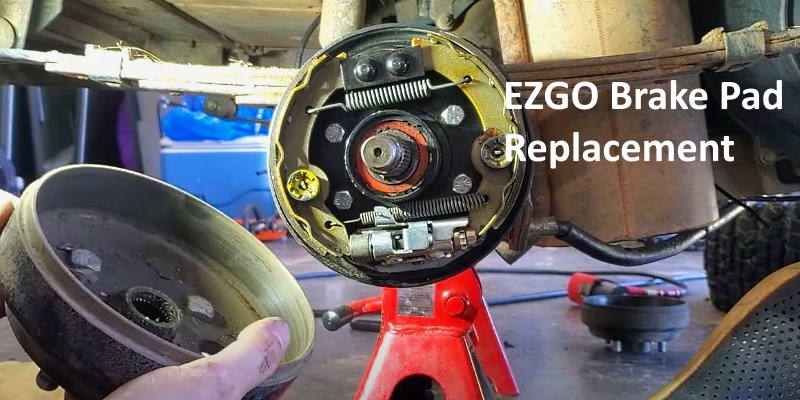
How to Test Golf Cart Batteries with a Multimeter: A Comprehensive Guide.
Golf cart batteries are essential for the efficient functioning of your golf cart. Over time, these batteries can lose their capacity or encounter other issues that might affect the performance of the cart. To ensure that your golf cart battery is in good condition, it’s crucial to test it regularly. One effective way to test your golf cart battery is by using a multimeter, an electronic measuring instrument that combines several functions in one unit. This article will provide a comprehensive guide on how to test golf cart batteries with a multimeter, ensuring that you can quickly diagnose and address any issues.
Preparing for the Test
Before you start testing your golf cart battery with a multimeter, ensure you have the following tools and materials:
A multimeter
A pair of safety gloves
Safety glasses
A clean, dry cloth
Distilled water (if needed)
Safety Precautions
When working with batteries, it’s essential to follow some basic safety precautions to prevent accidents and injuries. Here are a few tips:
Always wear safety gloves and glasses to protect your hands and eyes from battery acid.
Keep the golf cart turned off while testing the battery.
Remove any jewelry and avoid wearing loose clothing that could get caught in the golf cart’s moving parts.
Work in a well-ventilated area, as batteries can release harmful gases.
Testing Golf Cart Batteries with a Multimeter
Follow the steps below to test your golf cart batteries using a multimeter:
Step 1: Inspect the Battery
Before testing the battery, visually inspect it for any damage or leakage. Look for any cracks or swelling in the battery case, as well as any signs of acid leakage. If you notice any issues, it’s best to replace the battery rather than trying to repair it.
Step 2: Check the Water Level
Next, ensure that the water level in each cell of the battery is adequate. If the water level is low, fill each cell with distilled water until it reaches the recommended level. Be sure not to overfill the cells, as this can cause the battery to leak.
Step 3: Set Up the Multimeter
To test the battery voltage, you’ll need to set your multimeter to the appropriate setting. Turn the dial on the multimeter to the DC voltage setting (usually represented by a “V” with a straight line and a dashed line). Select a range that can accommodate the expected voltage of your golf cart battery (typically 12 volts for a single battery or 48 volts for a series of four batteries).
Step 4: Connect the Multimeter
With the multimeter set up, it’s time to connect it to the golf cart battery. Place the red probe of the multimeter on the positive battery terminal, marked with a “+” symbol, and the black probe on the negative terminal, marked with a “-” symbol. Make sure the probes make solid contact with the battery terminals.
Step 5: Read the Voltage
Now that the multimeter is connected, read the voltage displayed on the screen. A healthy 12-volt golf cart battery should have a voltage of approximately 12.6 to 12.8 volts when fully charged. If you have a series of batteries connected in your golf cart, you should read the combined voltage. For example, if you have four 12-volt batteries connected in series, the total voltage should be around 50.4 to 51.2 volts.
Interpreting the Results
If the voltage readings are within the expected range, your golf cart battery is likely in good condition. However, if the voltage is significantly lower than expected, it may indicate that the battery is weak, not fully charged, or has a problem. Here’s what you can do based on the voltage readings:
Low voltage but above 50% capacity: If the voltage is slightly lower than expected but still above 50% capacity (for example, 12.2 volts for a 12-volt battery), it may be due to the battery not being fully charged. In this case, charge the battery and retest it to see if the voltage increases to the expected range. If the voltage remains low, the battery may be weak or have an internal issue, and you should consider replacing it.
Significantly low voltage: If the voltage reading is significantly below the expected range (for example, below 12 volts for a 12-volt battery), this indicates a potentially dead or damaged battery. You should try charging the battery and retesting the voltage. If the voltage doesn’t improve, it’s likely that the battery is no longer usable and should be replaced.
Inconsistent voltage readings across a series of batteries: If you have multiple batteries connected in series and notice significant voltage differences between them, this could indicate that one or more batteries are weak or failing. In this case, you should individually test each battery and replace any that show low voltage readings.
Testing golf cart batteries with a multimeter is a simple and effective way to ensure that your golf cart performs optimally. By regularly checking the voltage of your golf cart batteries, you can quickly diagnose and address any issues, prolonging the life of your batteries and ensuring a smooth, enjoyable ride on the golf course. Remember to follow safety precautions and consult your golf cart’s manual for any specific instructions related to your model. Be safe!



